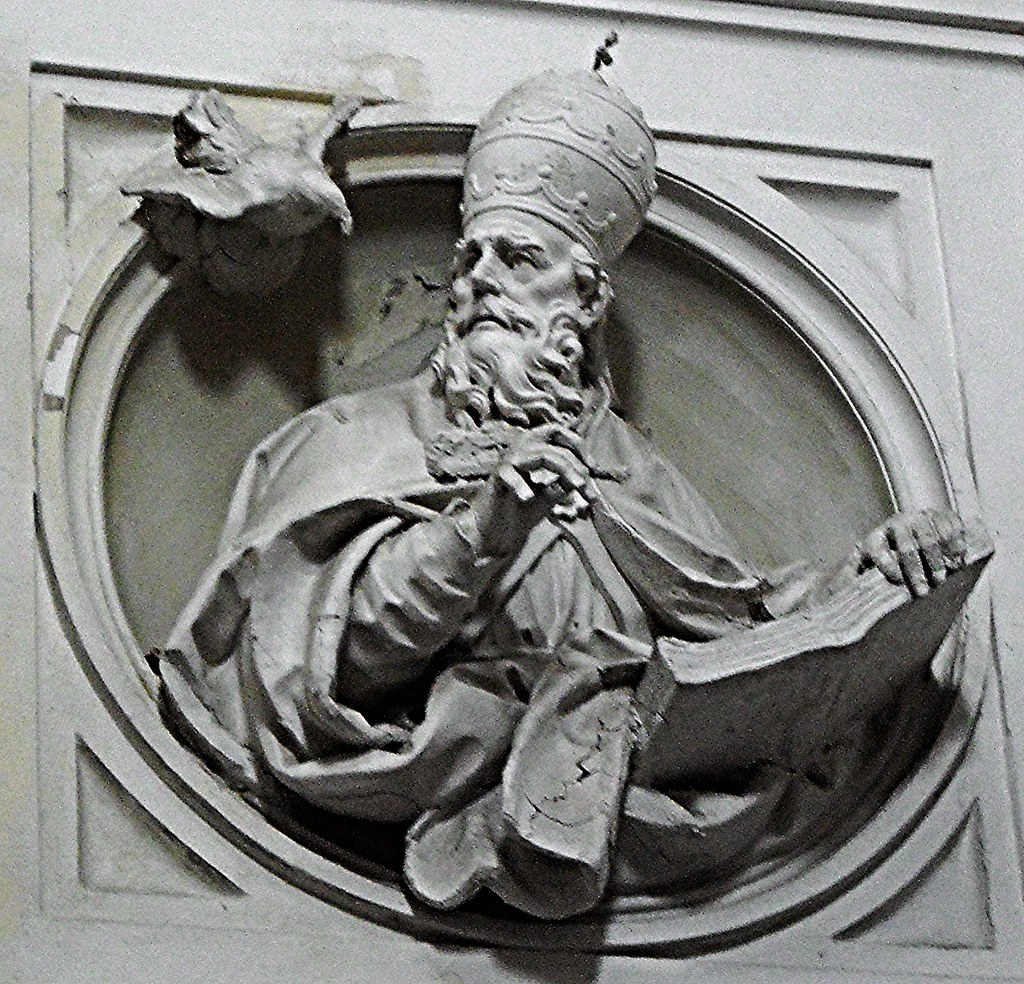
For the past two months this summer my parish, Church of Saint Mary’s in Tulsa, have sung the Gregorian Chant, “Regina Celi” after communion. Our songbook complete with four lines music staff and the funny square notes was provided in our worship books. It brought back memories of when I was kid prior to Vatican 2. Gregorian Chant became less a part of our liturgy after Vatican 2. However, musically it has had a resurgence.
Gregorian Chant was named after Pope Saint Gregory the Great who is our saint of the day. His name is given to this music form and is purely honorary. Pope Gregory is, however, know for his prolific writings in the early Church, the development of the Roman liturgy which has changed repeatedly over the centuries, and, also, his mission to convert the pagan Anglo-Saxons.
It is ironic my granddaughter has asked my to help her with her 8th grade Latin. Of course I agreed. It will be a challenge both to her and me.
Cogito; Ergo, Sum.
Pope Gregory is a perfect example of what it needs to be a servant who loves others. Servants give of themselves out of love for others. In our first reading from Saint Paul writes, For we do not preach ourselves but Jesus Christ as Lord and ourselves as your slaves for the sake of Jesus.
Yes, we are slaves because we have to give and give the love of God to others. We have to Let light shine out of darkness, has shone in our hearts to bring to light the knowledge of the glory of God on the face of Jesus Christ.
The real message today is our servanthood to the world. We have light in us because of the presence of Jesus Christ in our lives. All our actions represent that light. Saint Paul concludes, we hold this treasure in earthen vessels, that the surpassing power may be of God and not from us.
As we approach this day, may our earthen vessels be the Light of Jesus to the world to the honor God and memory of Saint Gregory .
God Love You Always
Bob Burford
Picture Credit: “Pope Gregory the Great – stucco bust (1760) by Paolo Persico (Naples about 1729-Naples 1780) – Spirito Santo Church in Naples” by Carlo Raso is marked with CC PDM 1.0
